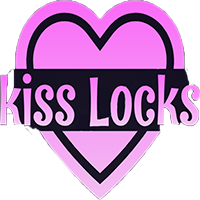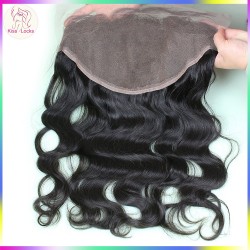15 Sep


Quick science lesson before we start! The condition of a hair follicle causes different curly hair types. A hair follicle is the small opening on the scalp that hair grows out of. The more oval the hair follicle, the more curly the hair becomes.

The hair follicle condition is also part of the reason curly hair needs more moisture than straight hair. The more oval the hair follicle, the harder it is for natural oils to distribute down the hair shaft evenly. Look at the coiled/kinky hair follicle picture below and imagine how the natural oils would have to move to go down the hair shaft. They are essentially pushed sideways to go out the top of a hair follicle, which to me is extremely bizarre!

Once you found your curl type, commit it to memory! The four curl pattern types act totally different from the other person and each needs separate care.

The Curly Girl Method recommends curly girls with: wavy hair to wash once a week, curly hair to wash around every 10 days, and coily/kinky hair to go as long as you can without washing! However , most curly girls advocate cleansing hair about every 3-4 days.
Washing curly hair every 3-4 days does not follow the Curly Girl Method. But , as long as the hair is washed with curly girl friendly products, moisture is added back to your curly hair, and hot water is not used, cleansing every 3-4 days is healthy for hair.
Depending on the nature of your scalp, going 3-4 days without a wash can sound terrifying at first. I have sensitive skin and scalp psoriasis; lucky me! If you have dandruff, scalp psoriasis, or other sensitivities, going 3-4 days without washing your hair is actually easier than it sounds; no matter the hair type or scalp issues. It is a matter of finding and tweaking methods that will benefit you, your curly hair, and your scalp.
In another article, I will be writing about how precisely to modify the Curly Girl Method for folks with dandruff, scalp psoriasis, and other scalp sensitivities. But for now, let’s jump into your hair characteristics and what type of nourishment your specific curly hair type will need.
Curly Hair Characteristics
Hair Porosity Test
Hair porosity refers to the ability hair has to absorb and retain moisture. Think of hair like a sponge. The more porous hair is, the higher its ability to retain liquid for moisture.
To determine your hair’s porosity, here are some questions to ask yourself:
You can even do a fun experiment to help determine your curly hair’s porosity level! Dunk the eliminate of your curly hair into a glass of water and observe what your hair does: sinks, floats, or somewhere in the middle. The further the hair sinks, the higher the porosity level is.

Curly hair needs a balance of moisture and proteins.
An elasticity test can determine what your curly hair could be lacking. Take an inch of your curly hair and gently stretch it between your hands. Healthy curly hair can stretch from 20% to 50% of its original length, according to if it is wet or dry. If your hair stretches, your curly hair is balanced with proteins and moisture. If your hair does not stretch, more moisture needs to be added to your curly hair. If your hair stretches more then it should and breaks, your curly hair is lacking protein.
Curly Hair Routine
You have found your curly hair type and what needs your curl pattern has; that is the first step to reaching your best and healthiest curly hair! Now it is time so that you can create a curly hair routine to nourish those curls. Feeling lost? Read some more articles I have posted for ideas or comment below.

Curly Hair Follicle Shapes
Wavy hair has a semi-oval hair follicle, curly hair has an oval hair follicle, and coiled/kinky hair has a flat oval hair follicle. Knowing which hair follicle creates your curly hair type is the first step in understanding your natural hair’s curl pattern.The hair follicle condition is also part of the reason curly hair needs more moisture than straight hair. The more oval the hair follicle, the harder it is for natural oils to distribute down the hair shaft evenly. Look at the coiled/kinky hair follicle picture below and imagine how the natural oils would have to move to go down the hair shaft. They are essentially pushed sideways to go out the top of a hair follicle, which to me is extremely bizarre!

Curl Pattern Types
Curly hair can be divided into four curl pattern types: wavy, curly, coily, and kinky. Each curl pattern type divides further by a number and letter according to how tight the curl is. It is possible to have more than one curl pattern type; it is actually incredibly common! Look at the picture below to help find your curl pattern type.Once you found your curl type, commit it to memory! The four curl pattern types act totally different from the other person and each needs separate care.

How Often To Wash Curly Hair
Before we find what care your curly hair type especially needs, let’s speak about the curl pattern types as a whole. Since the hair follicle for wavy hair allows natural oils to distribute down the hair shaft easier, washing your hair more often is fine. Whereas coily hair is drier as a result of the hair follicle. This means girls with coily hair should cleanse their hair as little as possible.The Curly Girl Method recommends curly girls with: wavy hair to wash once a week, curly hair to wash around every 10 days, and coily/kinky hair to go as long as you can without washing! However , most curly girls advocate cleansing hair about every 3-4 days.
Washing curly hair every 3-4 days does not follow the Curly Girl Method. But , as long as the hair is washed with curly girl friendly products, moisture is added back to your curly hair, and hot water is not used, cleansing every 3-4 days is healthy for hair.
Depending on the nature of your scalp, going 3-4 days without a wash can sound terrifying at first. I have sensitive skin and scalp psoriasis; lucky me! If you have dandruff, scalp psoriasis, or other sensitivities, going 3-4 days without washing your hair is actually easier than it sounds; no matter the hair type or scalp issues. It is a matter of finding and tweaking methods that will benefit you, your curly hair, and your scalp.
In another article, I will be writing about how precisely to modify the Curly Girl Method for folks with dandruff, scalp psoriasis, and other scalp sensitivities. But for now, let’s jump into your hair characteristics and what type of nourishment your specific curly hair type will need.
Curly Hair Characteristics
Hair Porosity Test
Hair porosity refers to the ability hair has to absorb and retain moisture. Think of hair like a sponge. The more porous hair is, the higher its ability to retain liquid for moisture.
To determine your hair’s porosity, here are some questions to ask yourself:
How does your curly hair react when it first becomes wet in the shower?
If the water repels or takes a while to absorb, your hair has low porosity. If the hair absorbs it immediately, your hair has high porosity.When you pull a wet strand of curly hair, what happens?
If the hair stays elongated, then your hair has a high porosity level. If your hair strand springs back into a curl, your hair has a low porosity level.You can even do a fun experiment to help determine your curly hair’s porosity level! Dunk the eliminate of your curly hair into a glass of water and observe what your hair does: sinks, floats, or somewhere in the middle. The further the hair sinks, the higher the porosity level is.

Hair Elasticity
Believe it or not, hair can actually stretch! How well your curly hair absorbs moisture and stretches will determine the hair care needed. Hair care is more than just adding moisture and over moisturizing curly hair can happen! Over moisturized curly hair can feel gummy and can break just as easy as dry hair.Curly hair needs a balance of moisture and proteins.
An elasticity test can determine what your curly hair could be lacking. Take an inch of your curly hair and gently stretch it between your hands. Healthy curly hair can stretch from 20% to 50% of its original length, according to if it is wet or dry. If your hair stretches, your curly hair is balanced with proteins and moisture. If your hair does not stretch, more moisture needs to be added to your curly hair. If your hair stretches more then it should and breaks, your curly hair is lacking protein.
Curly Hair Routine
You have found your curly hair type and what needs your curl pattern has; that is the first step to reaching your best and healthiest curly hair! Now it is time so that you can create a curly hair routine to nourish those curls. Feeling lost? Read some more articles I have posted for ideas or comment below.
Related Products
Item Code :KSLS10-G147-C1B-3944Color:#1B Natural colorHair Material:100% Human hairTexture:Natural body wave,wavesWeight:55-68gHair Grade:10AFeature:1..
$169.52 $250.25
Item Code :KSLS10-G147-FS1B-6002Color:#1B Natural Black or Dark BrownHair Material:100% Filipino Human HairTexture:Natural Loose deep wave,loose curly..
$138.52 $198.24
Item Code :KSLS10-G147-FS1B-6006Color:#1B Natural Black or Dark BrownHair Material:100% Filipino Human HairTexture:Natural Loose deep wave,loose curly..
$138.25 $195.36




3 Comment(s)
I must say, the Journal Blog is a fantastic addition to an already outstanding theme. Keep up the good work guys, it's amazing what you come up with for the Opencart community.
Super Theme, I'm going to buy it for my handmade jewellery store.
Lorem ipsum dolor sit amet, consectetur adipiscing elit. Aliquam iaculis egestas laoreet. Etiam faucibus massa sed risus lacinia in vulputate dolor imperdiet. Curabitur pharetra, purus a commodo dignissim, sapien nulla tempus nisi, et varius nulla urna at arcu.
Returning to your website is like returning to a familiar place. The design is so comforting and the content is always enriching. Keep up the great work!
Leave a Comment